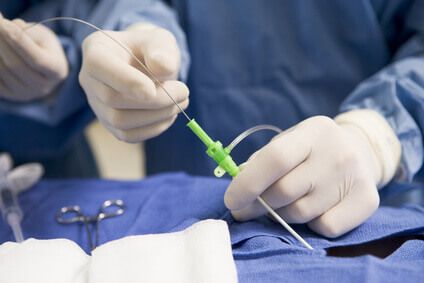The degeneration of transcatheter biological valves clearly depends on time and starts with thrombus generation and subsequent histological changes resulting in valve failure (due to regurgitation, stenosis, or both).
 Thrombus formation is the first change, observed early in computerized tomography (CT) scans after implantation. Most times it is completely asymptomatic, which leaves many of us wondering whether we should actually do something about this phenomenon.
Thrombus formation is the first change, observed early in computerized tomography (CT) scans after implantation. Most times it is completely asymptomatic, which leaves many of us wondering whether we should actually do something about this phenomenon.
This study provides more data and tells us that, perhaps, thrombus formation is just the beginning of a series of consecutive events over time such as endothelial hyperplasia, fibrosis, tissue remodeling, proteinase expression, and, ultimately, calcification.
This is the first study to investigate processes causing leaflet thickening and structural degeneration of transcatheter valves.
Read also: Bundle Branch Block and Need for Permanent Pacemaker, a Major Challenge after TAVR.
A few alarms went off with the first CT imaging studies showing thrombus formation and thickening. Based on those studies, this work provides histological details to better understand this phenomenon.
Researchers studied 23 explanted valves from 22 patients, from 0 to 2583 days after the procedure. Maximal leaflet thickness increased relative to implant duration (p = 0.027). Valves explanted after 2 years were thicker than those with shorter duration (p = 0.0027). All valves had adherent thrombi on both aortic and ventricular sides, which after 60 days combined with fibrosis and after 4 years, with calcification.
Early thrombus formation (<60 days after the procedure) occurred despite rapid endothelialization and was associated with an abnormal hyperplastic phenotype. Fibrosis was observed in 6 patients on both the aortic and the ventricular surfaces, and remodeled over time. All these changes were associated with matrix metalloproteinase-1 expression.
Read also: TAVR Is Feasible and Offers Good Outcomes in Patients with Cancer.
Five patients showed calcification, always associated with adherent thrombus and fibrosis.
Conclusion
Percutaneous valves degenerate over time. Such process seems to begin with thrombus formation and, after several evolution steps, results in calcification. Future investigations are needed to further understand these phenomena contributing to leaflet thickening and ulterior degeneration, and, above all, to try and prevent it, thus prolonging device duration. So far, the key seems to be taking measures during the earliest stage, the formation of adherent thrombi.
Original title: Transcatheter Aortic Heart Valves. Histological Analysis Providing Insight to Leaflet Thickening and Structural Valve Degeneration.
Reference: Stephanie L. Sellers et al. J Am Coll Cardiol Img 2019. Article in press.
Get the latest scientific articles on interventional cardiologySubscribe to our weekly newsletter
Su opinión nos interesa. Puede dejar su comentario, reflexión, pregunta o lo que desee aquí abajo. Será más que bienvenido.





